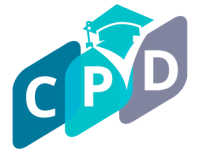PSLE Maths: A 3-Year Analysis of Mark Distribution Trends
The PSLE Mathematics examination is one of the most crucial assessments for primary school students in Singapore. Understanding the mark distribution over the past three years can provide valuable insights for students, parents, and educators on how to focus their preparation efforts.
In this article, we analyze the mark distribution across different mathematical topics from 2022 to 2024 based on the provided data.
Key Observations from the Analysis
1. Consistency in Total Marks
Across all three years, the total marks for Paper 1 and Paper 2 remain 45 and 55, respectively, summing up to 100 marks. This stability indicates that students can expect a similar weighting in future PSLE examinations.
2. Dominance of Number and Measurement Topics
• The Number topic consistently contributes 28 marks each year, making it the most heavily weighted topic. This suggests that mastering number-related concepts, such as fractions, decimals, and whole numbers, is crucial.
• Measurement has also been a major contributor, fluctuating between 22 to 24 marks over the years. Topics such as area, perimeter, volume, and unit conversions are essential to focus on.
3. Growth in Statistics Questions
• In 2022, Statistics was worth only 12 marks, but by 2024, it has increased to 16 marks.
• This indicates a growing emphasis on data handling, interpretation of graphs, and probability, making it an area that students should not neglect.
4. Variability in Geometry and Ratio & Percentage
• Geometry has fluctuated slightly, contributing between 15 to 17 marks in different years.
• Ratio & Percentage had 12 marks in 2022 but dropped to only 8 marks in 2024. While still important, students might prioritize other topics with higher weightage.
5. Algebra and Rate & Speed Are Less Emphasized
• Algebra remains a minor component, with only 2 to 4 marks each year.
• Rate & Speed questions appear sparingly, making up only 3 to 7 marks annually.
• While these topics should not be ignored, students should prioritize higher-weightage topics first.
How Students Can Use This Data to Prepare Effectively
1. Prioritize High-Weightage Topics
• Number, Measurement, and Statistics should be top priorities, as they make up nearly two-thirds of the paper.
• Mastering fundamental operations, problem-solving strategies, and visualization skills for these topics will be highly beneficial.
2. Practice with Past-Year Papers
• Solving past-year PSLE papers helps in identifying recurring question types and patterns.
• Focus on questions from Geometry, Ratio & Percentage, and Rate & Speed, which vary slightly in difficulty across years.
3. Strengthen Conceptual Understanding Over Rote Learning
• The PSLE Maths paper is known for its application-based and real-world problem-solving questions.
• Instead of memorizing formulas, students should practice applying concepts in different contexts.
4. Be Prepared for Changes in Weightage
• While trends show consistency, the weightage of topics can shift slightly from year to year.
• A balanced approach to revision ensures students are prepared for any surprises in the actual exam.
Final Thoughts
This 3-year analysis of PSLE Maths mark distribution offers valuable insights into which topics to prioritize for better exam performance. By focusing on Number, Measurement, and Statistics, students can maximize their scores while still dedicating time to Geometry, Ratio & Percentage, and other topics.
For parents and educators, understanding these trends can help in designing a more effective study plan and guiding students toward strategic revision.
With a well-planned approach, students can confidently tackle the PSLE Maths exam and achieve their best possible results!
Are you preparing for the PSLE? Let us know how you’re planning your revision in the comments below!
